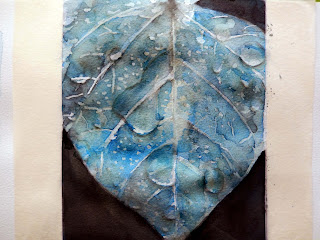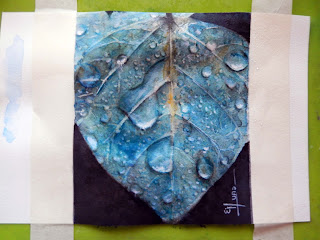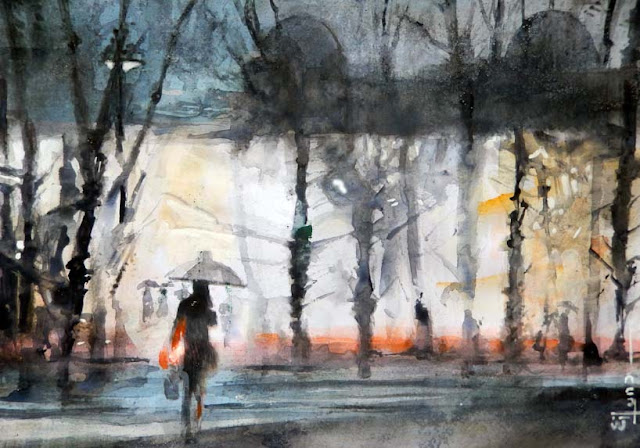Following is the result of this process;
You do not need a large selection of brushes, if you choose the right one, you will often find you can complete a entire work with 2 or 3, The most versatile are those know as rounds, the following painting was made with 2 main watercolors (Payne´s Grey & Prussian Blue) and a bit of Crimson red, and 3 brushes ( Round, Angle and Fan) over cold press paper 220 gr roughest side masking fluid & absorbent paper
Stage 1.- I start by letting pale colors blend on the paper to identify my main references and cover the White of the paper in most of the áreas to work with, once it drys // stage 2.- I masking main reflections from the center of the paper towards the sides and from small sizes to biger in accordance light reflection idea
(I use fan brush in a horizontal way with diluted masking fluid 1:1)
Stage 3.- Palette mixing .- I start by dilute prussian blue with wáter for the sea and same color plus paýne´s grey for the sky.- with just the side of the round brush, from the side of the paper toward the center with almost no wáter and with the help of the rough side paper the marks will appear discontinue as you can see in the image, "dry brush technic" given the suggestion of light reflections do not overdue and practice in a scrap paper Stage 4.- same round brush I did use for the sky "wet in wet technic" the clouds are easy form with the help of paper draggin it while the paper still is wet, I also reserve some White paper withou touch it, at all .- Note at the horizon I added a bit of crimson which I fade away accordingly
Stage 5.- Now with the angle brush I did all the dark figures with just Payne´s Grey
Stage 6.- Final touches.- I removed the masking fluid and again with a pale color around I reinforced the lightest zones
" Come With Me "




















































